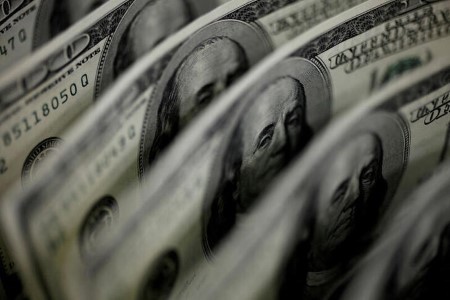




Monthly Economic Update: One for the road
 DOWNLOAD
DOWNLOAD

Inflation Update: Still low, still slow
 DOWNLOAD
DOWNLOAD

Philippines Trade Update: Exports momentum continues
 DOWNLOAD
DOWNLOAD


US recap: Dollar and yen trample euro and sterling in anxious trading

May 11 (Reuters) – Flows into the haven dollar and yen dominated trading Thursday amid further indications excess demand and inflation following pandemic reopenings is fading, as several quarters of central bank tightening and yield curve inversion increase recession fears and dim financial risk taking.
Following Wednesday’s slightly softer-than-forecast US CPI data, China on Thursday reported inflation at just 0.1%, with PPI plunging to -3.6% year-on-year from -2.5% in March.
Adding to Treasury bids were the US PPI fall to 2.3% from 2.7% year-on-year and a bigger-than-forecast jobless claims jump to the highest in 1-1/2 years.
Toss in ongoing pressure on US regional banks and the demand for relatively high-yielding Treasuries left 10-year yields down 4bp.
EUR/USD fell 0.6%, after making a 1-month low at 1.0900 on EBS as normally supportive higher bund-Treasury yields spreads were instead the bearish result of risk-off flows favoring Treasuries.
Sterling fell nearly 1% after the BoE’s as-expected 25-bp rate hike to 4.5% on Thursday was oddly paired with much higher than previous inflation and growth forecasts.
UK inflation remains above 10% and more than twice the new BoE projection.
Sterling’s 1-year peak this week was capped by the downtrend line from 2021’s high.
The two top havens, the dollar and yen, fought to a draw after the initial dive with falling Treasury yields bottomed after halving the March-May bank crisis recovery. The rebound just above flat came as the dollar began taking the lion’s share of haven demand and Treasury yields came off their lows.
High beta and commodity-linked currencies fell hard due to the dollar’s risk-on rise and China demand doubts.
US retail sales on Tuesday as well as banks and the debt ceiling are key risks ahead.
(Editing by Burton Frierson; Randolph Donney is a Reuters market analyst. The views expressed are his own.)
This article originally appeared on reuters.com





 By Reuters
By Reuters